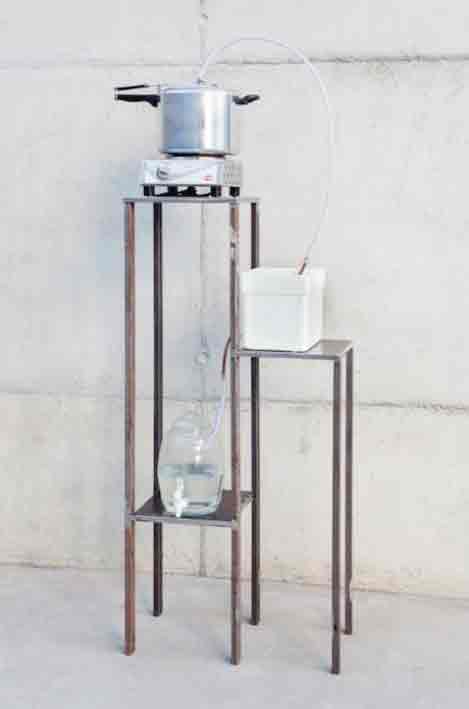Interpretation by Lis Haddad

Artist Raphael Escobar is also an educator in contexts of social vulnerability and activates his artistic research as a mediation between marginalized people and the institutions that establish what is socially acceptable. In his work there are no half-truths, nor half-processes. Escobar inserts himself and transits, as he defines himself, as the soccer number 10:
"The number 10 is the midfielder, the one who makes the transition between defense and attack, or attack and defense, circulating in both spaces. The midfielder makes the assists for one side and helps in the defense of the other, and that's the way I see my performance within the field of culture, between its two poles, pulling the street into the institutions and leaking the institutions out."
In 2016 the artist was one of the residents of the 12th Artistic Residency at Red Bull Station, in downtown São Paulo. During this period he developed the work Open Bar in which he made an artisanal distillery inside the institution. Following the same techniques used by inmates of the Brazilian prison system to produce Maria Louca (as the cachaça produced in these spaces is popularly called) Raphael made 40L of cachaça and through pamphlets advertised to the street population where they could get the drink for free.
The sense of ambiguity that permeates the work is also what captures it. Raphael questions the moral logic of society in relation to street people and drug users and proposes reflection on policies of oppression, exclusion, and restriction of rights and freedoms.
Through a mechanism created by an oppressed group Escobar questions who is socially authorized to occupy the spaces of cultural fruition. By being taken inside the artistic institution, the object assumes the function of a mediating device dissolving, even if momentarily, the social wall, the authorization, of who should remain inside and who should remain outside.
Artist's website: http://www.escobarr.com/
